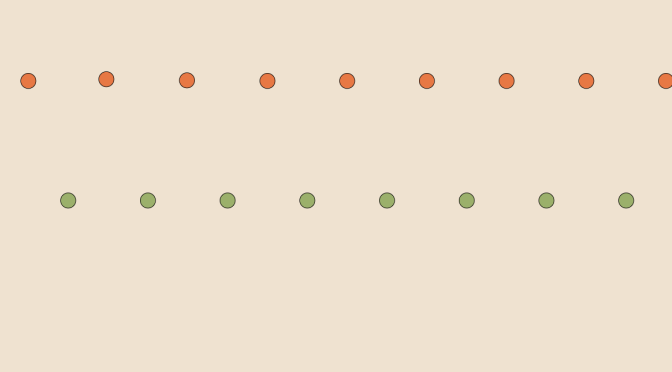The purpose of this article is to provide some basic counterexamples on real sequences. Counterexamples are provided as answers to questions.
I will come back later on with more complex cases. Unless otherwise stated, \((u_n)_{n \in \mathbb{N}}\) and \((v_n)_{n \in \mathbb{N}}\) are two real sequences.
If \(\lim u_n = 0\) then \(\lim u_n v_n = 0\)?
Is not true. Taking \(u_n = \frac{1}{n+1}\) and \(v_n = n+1\) we get \(u_n v_n = 1\) for all \(n\). We can even get \(\lim (u_n v_n) = + \infty\) for \(u_n = \frac{1}{n+1}\) and \(v_n = (n+1)^2\).
If \(\lim (u_n v_n) = 0\) then \(\lim u_n= 0\) or \(\lim v_n= 0\)?
Does not hold as can be seen by taking \(u_n=0\) for \(n\) even and \(u_n=1\) for \(n\) odd, while taking \(v_n=1\) for \(n\) even and \(v_n=0\) for \(n\) odd.
With following other example: \(u_n=\begin{cases} 0 & \text{for } n \text{ even} \\
n & \text{for } n \text{ odd} \end{cases}\) and
\(v_n=\begin{cases} n & \text{for } n \text{ even} \\
0 & \text{for } n \text{ odd} \end{cases}\) we even have \(u_n v_n = 0\) for all \(n\) while \((u_n)\) and \((v_n)\) are both unbounded.
If \(\lim (u_n + v_n) = + \infty\) then \(\lim u_n= + \infty\) or \(\lim v_n= + \infty\)?
Is not true as we can see with the sequences of previous question, i.e.
\(u_n=\begin{cases} 0 & \text{for } n \text{ even} \\
n & \text{for } n \text{ odd} \end{cases}\) and
\(v_n=\begin{cases} n & \text{for } n \text{ even} \\
0 & \text{for } n \text{ odd.} \end{cases}\) However one of the sequence has to be unbounded as the sum of two bounded sequences is bounded.
If \((u_n)\) is a strictly decreasing sequence of positive reals then \(\lim u_n = 0\)?
Absolutely not! Consider \(u_n=1+\frac{1}{n+1}\).
If \((u_n)\) is a positive real sequence and \(\lim u_n = 0\) then \((u_n)\) is eventually decreasing?
Not either. Have a look at \(u_n=\begin{cases} \frac{1}{n+1} & \text{for } n \text{ even} \\
\frac{1}{(n+1)^2} & \text{for } n \text{ odd.} \end{cases}\)
If \(u_n > 0\) for all integers then \(\lim (n u_n) = + \infty\)?
Still not… For \(u_n = \frac{1}{(n+1)^2}\) we have \(\lim (n u_n) = 0\).
If \(u_n > 1\) for all integers then \(\lim (u_n)^n = + \infty\)?
Is not true. The sequence \(u_n = 1 + \frac{1}{n}\) for \(n \ge 1\) and \(u_0=0\) is such that \(\displaystyle \lim\limits_{n \to +\infty} (u_n)^n = \lim\limits_{n \to +\infty} (1 + \frac{1}{n})^n = e\). Where \(e\) is the well known e (mathematical constant).
If \(\lim (u_{n+1}-u_n) =0 \) then \((u_n)\) is convergent?
Sorry to provide again a negative answer – the last one! The harmonic series \(u_n = \displaystyle \sum_{k=0}^n \frac{1}{k+1}\) diverges.
What about you? What are your prefered real sequences counterexamples?


One thought on “Counterexamples on real sequences (part 1)”